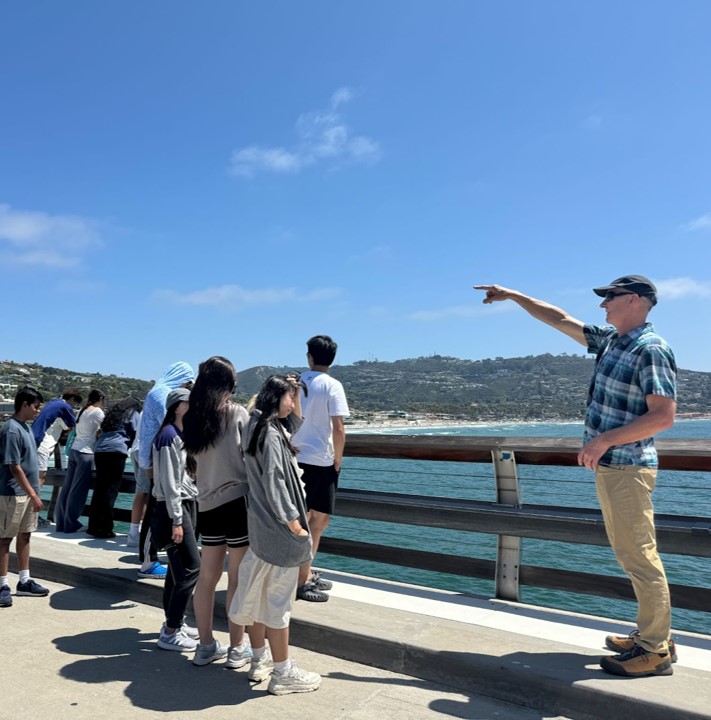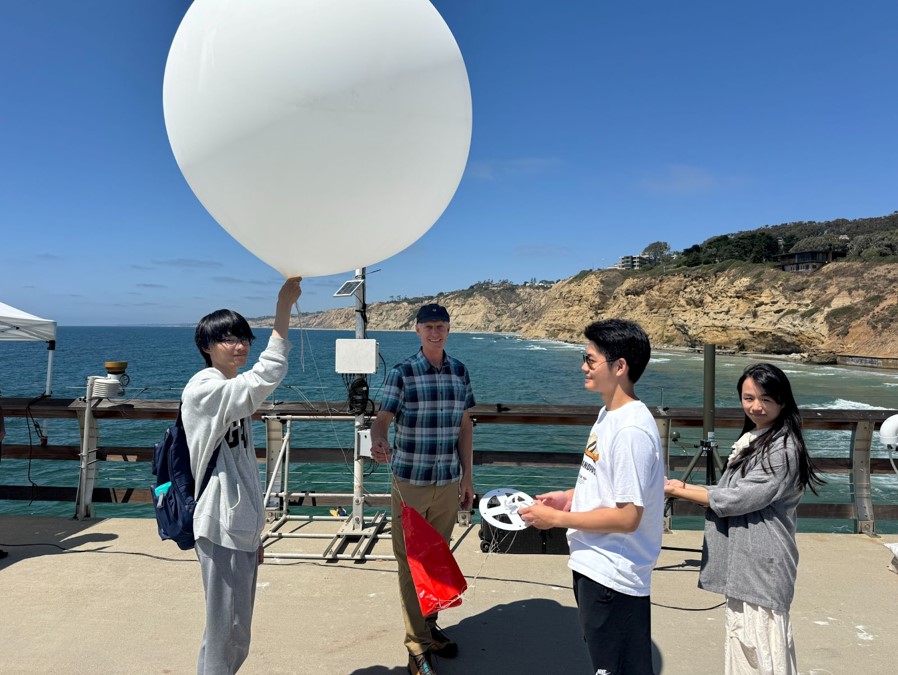CW3E Presents at UCSD’s Future Leaders Summer Program
August 12, 2024
The Center for Western Weather and Water Extremes (CW3E) hosted 16 international and domestic high school students attending the Future Leaders Summer Program for a session on Climate Crisis. The program is conducted by the 21st Century China Center and the Global Leadership Institute at the UC San Diego School of Global Policy and Strategy. The program is designed for high school students to develop problem-solving and diplomacy skills in global affairs, especially as they pertain to the roles of China, the U.S., Pacific and Indo-Pacific region countries including Mexico and India. The 2024 program focused on three critical issues: climate crisis, energy innovation, and artificial intelligence.
First, CW3E’s Douglas Alden and Lisa Katz led high school students from the Global Leadership Institute on a tour of the Ellen Browning Scripps Memorial Pier. The pier houses numerous environmental monitoring stations and enables small boat and scientific diving operations. During the group’s tour, students were able to see how busy a working research pier can get with cars, boats, golf carts, and people coming and going. Halfway down the pier, students gathered around CW3E’s weather station and Douglas and Lisa introduced the sensors that observe meteorological variables including humidity, temperature, barometric pressure, solar radiation, precipitation, wind speed, and wind direction.

Douglas Alden explains how seawater is pumped from the ocean and delivered to facilities on the Scripps campus
Students continued their tour to the end of the pier, where they learned about the daily seawater temperature and salinity measurements taken in the tide room as part of the Shore Stations Program run by the Coastal Observing Lab, measurements that have been ongoing for over a century. The group learned how ocean temperatures have been increasing due to climate change and the importance of continued monitoring. In addition, students were able to see the saltwater intake that feeds saltwater tanks on campus including at the Birch Aquarium, the crane used to launch boats and lift them back onto the pier, and the staircase that lowers to the ocean surface to provide water access for researchers scuba diving around the pier.
The tour culminated with a weather balloon launch. The group received an introduction to the technology used to set up and track a radiosonde sensor attached to a weather balloon, and learned how radiosonde measurements tie in with other field observational systems used by CW3E. They observed and asked questions while Douglas and Lisa prepared the weather balloon and radiosonde. Student volunteers from the Future Summer Leaders Program released the balloon on the group’s countdown. They learned how data from the weather balloon launch would be uploaded and ingested into weather models run by meteorological organizations around the world.
 |
 |
Left: Volunteers from the Global Leadership Institute get ready to release a weather balloon. Right: Students learn about the data collected and displayed by the weather balloon tracking system.
After the pier tour, CW3E’s Deanna Nash was the guest speaker for the Interview with Experts in the Field: Climate Crisis and gave a presentation on some of the work the center is doing to improve the resiliency of different communities in the face of climate change. The presentation focused on several core areas of the center: precipitation extremes in the Western U.S., Forecast Informed Reservoir Operations (FIRO), Atmospheric River Reconnaissance, and climate science. Additionally, Deanna shared her experiences as a postdoctoral researcher at CW3E and summarized her current research on landslides, floods and avalanches triggered by precipitation in Southeast Alaska. Discussion with the students included describing the impacts of El Niño on atmospheric river frequency and intensity, and the mechanisms that develop atmospheric rivers. CW3E is grateful to have had the opportunity to interact with the intelligent and enthusiastic students.
